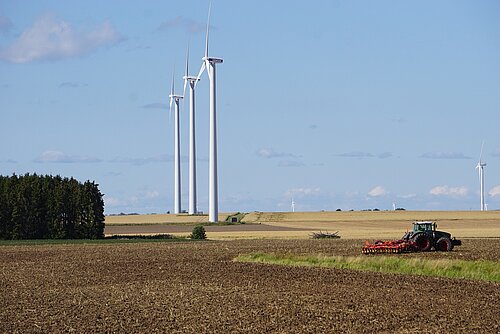Dieser Artikel von Alex Grey ist auf der <link https: www.weforum.org agenda sweden-to-reach-its-2030-renewable-energy-target-this-year external-link-new-window internal link in current>Homepage des World Economic Forum erschienen.
Sweden is on target to meet one of its renewable energy targets years ahead of schedule, and it’s thanks in part to wind turbines. In 2012, Norway and Sweden reached a joint agreement to increase their production of electricity from renewable energy sources by 28.4 terawatt hours (TWh) by 2020.
Sweden then increased its target, with the aim of <link http: www.energimyndigheten.se en sustainability the-electricity-certificate-system>adding another 18 TWh by 2030.
Taking into account the number of wind turbines already built, plus planned wind turbine investments for the remainder of the year, Sweden is on track to hit its 2030 target - possibly by the end of the year.
Sweden’s energy target
By the end of 2018, Sweden will have installed 3,681 turbines, with a capacity of 7,506 MW and an estimated annual production of 19.8 TWh.
“After the decision on the increase in ambition was reached, a lot of investment decisions have been taken and many wind turbines are set to be completed in the upcoming years,” Markus Selin, analyst at the Swedish Energy Agency, told the World Economic Forum. According to the Agency, the ambitious targets set for renewables production are now well within reach.
“15.2 TWh of renewable energy projects are in construction today, of which 11.6 TWh is wind power,” he added.“The joint goal of 28.4 TWh will be exceeded by about 10 TWh. This leaves about 8.7 TWh of the Swedish ambition increase of 18 TWh.”
Energy goals
Sweden has ambitious goals for energy and climate adaptation. It has set a target of 50% more efficient energy use by 2030, and 100% renewable energy production by 2040.
It also has a target of <link https: www.government.se press-releases government-making-broad-investments-in-energy>net zero emissions of greenhouse gases by 2045.
As part of the Paris Agreement on Climate Change, the EU set a <link https: ec.europa.eu energy en topics renewable-energy renewable-energy-directive>renewable energy directive that sets a binding target of 20% final energy consumption from renewable sources by 2020.
The vast majority of EU countries <link https: ec.europa.eu energy en topics renewable-energy progress-reports>are well on track to reach their 2020 binding targets for renewable energy.
The global picture
Since 2010, global installed renewables capacity <link http: www.irena.org>has been increasing steadily at about 8 to 9% annually, which is more than double the average growth for non-renewables. In 2017 alone, an additional 167 GW of renewable capacity was installed globally. That is enough to power a country the size of Brazil. The biggest increases were seen in wind and solar. Asia has seen the fastest rise in renewables in recent years, and now accounts for over 42% of global renewable capacity.
<link https: ec.europa.eu energy en topics renewable-energy progress-reports external-link-new-window internal link in current>Download der Fortschrittsberichte der EU-Mitgliedsstaaten

